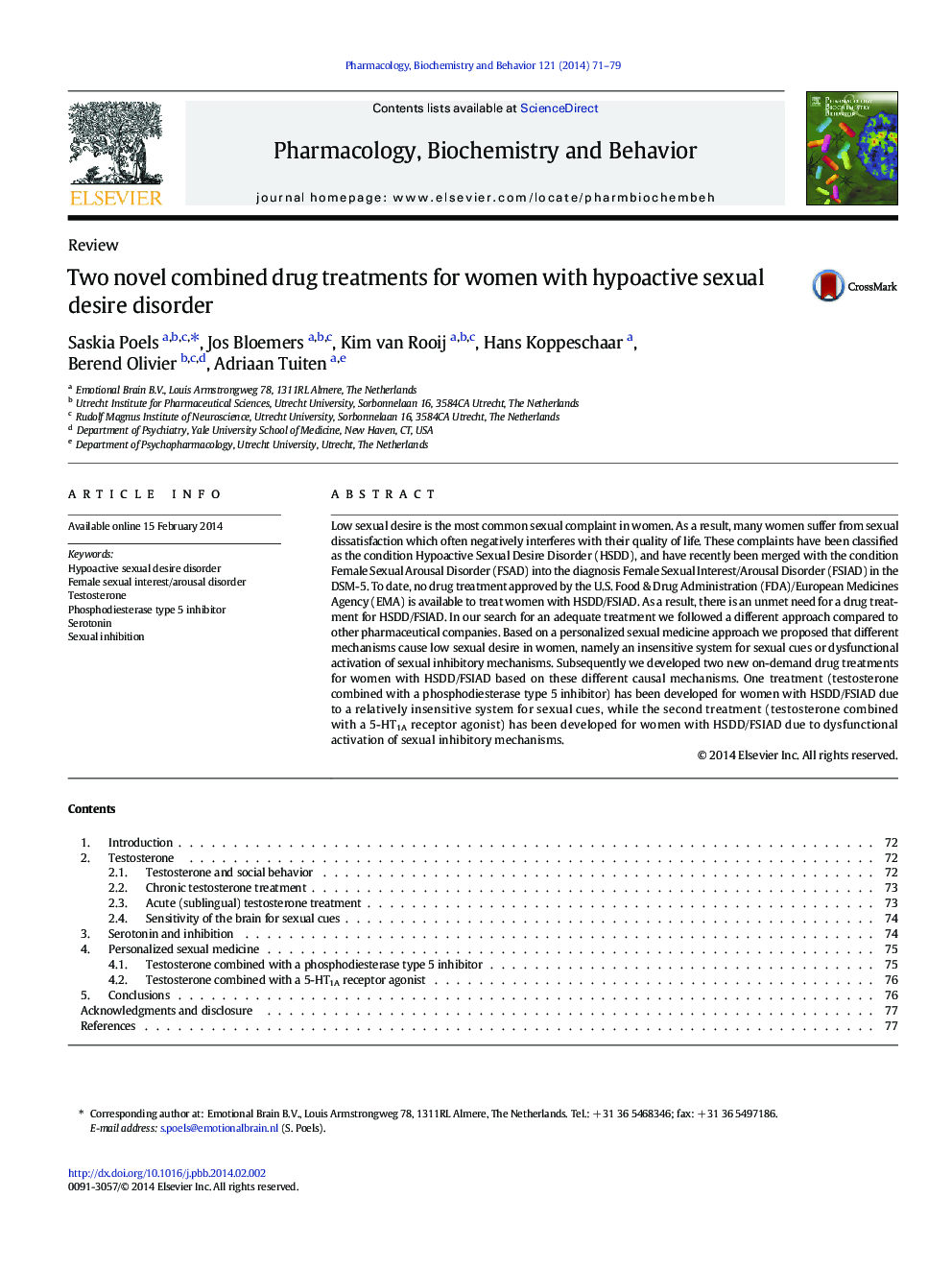| کد مقاله | کد نشریه | سال انتشار | مقاله انگلیسی | نسخه تمام متن |
|---|---|---|---|---|
| 2012842 | 1541863 | 2014 | 9 صفحه PDF | دانلود رایگان |
• We propose that different mechanisms cause low sexual desire in women.
• Some women have low sexual desire due to a relative insensitivity for sexual cues.
• Some women have low sexual desire due to dysfunctional sexual inhibitory mechanisms.
• We developed two drug treatments for HSDD based on a personalized medicine approach.
Low sexual desire is the most common sexual complaint in women. As a result, many women suffer from sexual dissatisfaction which often negatively interferes with their quality of life. These complaints have been classified as the condition Hypoactive Sexual Desire Disorder (HSDD), and have recently been merged with the condition Female Sexual Arousal Disorder (FSAD) into the diagnosis Female Sexual Interest/Arousal Disorder (FSIAD) in the DSM-5. To date, no drug treatment approved by the U.S. Food & Drug Administration (FDA)/European Medicines Agency (EMA) is available to treat women with HSDD/FSIAD. As a result, there is an unmet need for a drug treatment for HSDD/FSIAD. In our search for an adequate treatment we followed a different approach compared to other pharmaceutical companies. Based on a personalized sexual medicine approach we proposed that different mechanisms cause low sexual desire in women, namely an insensitive system for sexual cues or dysfunctional activation of sexual inhibitory mechanisms. Subsequently we developed two new on-demand drug treatments for women with HSDD/FSIAD based on these different causal mechanisms. One treatment (testosterone combined with a phosphodiesterase type 5 inhibitor) has been developed for women with HSDD/FSIAD due to a relatively insensitive system for sexual cues, while the second treatment (testosterone combined with a 5-HT1A receptor agonist) has been developed for women with HSDD/FSIAD due to dysfunctional activation of sexual inhibitory mechanisms.
Journal: Pharmacology Biochemistry and Behavior - Volume 121, June 2014, Pages 71–79
